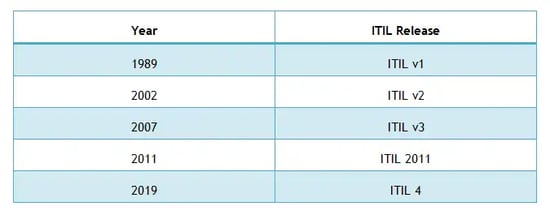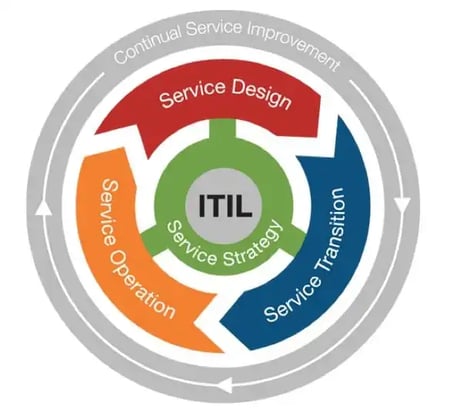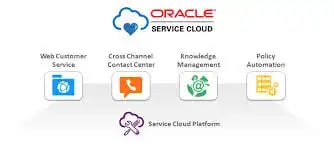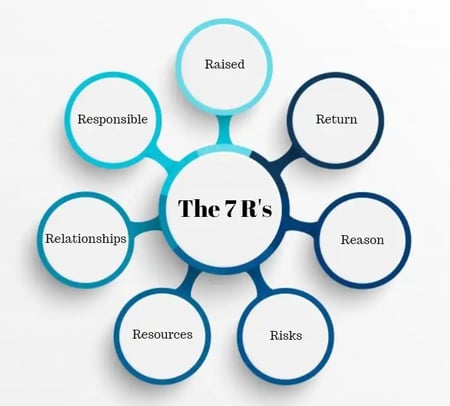Top 25 ITIL Interview Questions and Answers for Career Growth
Summary
ITIL (Information Technology Infrastructure Library) is a set of ITSM (Information Technology Service Management) practices that focus on regulating IT services according to business needs and industry standards. It provides best practices and processes for managing IT services effectively. ITIL helps professionals deliver quality services and is in high demand, making ITIL certification beneficial for career growth. The interview questions cover various aspects of ITIL, such as its history, life cycle phases, processes, and measurement layers. Understanding ITIL principles is essential for organizations seeking to improve service delivery and alignment with business requirements.
Table of Content
ITIL (previously an acronym for Information Technology Infrastructure Library) is a set of ITSM (Information Technology Service Management) practices that focus on regulating the services of Information Technology with of the needs of organizations. Since the IT industry is dynamic and as there are continuous developments in service structure and practices, it focuses mainly on the alignment and maintenance of IT services with respect to the prevailing market and standards of business.
ITIL helps professionals to keep up the pace and deliver quality services to their customers effectively. As more and more businesses are looking to use the best practices for improving their service and product delivery, there is a huge demand for ITIL-certified professionals. It is always advisable to stay ahead in the competition by taking an ITIL course and gaining a certification that improves the chances of landing a better job. In order to make the path of your desired career possible, you must be able to crack the interview.
Interview Questions
Here are a few generally asked ITIL interview questions to help you prepare for your interview.
1. What is ITIL?
ITIL (Information Technology Infrastructure Library) is a set of recommendations for best practices for IT Service Management. It is a set of recommendations and not a compulsion. With the help of ITIL, organizations create a baseline of IT service. It provides a set of processes and standards for the selection, planning, implementation, maintenance, and measurement of IT as a service. Activities or processes that have been successfully used by multiple organizations to achieve a business goal are best practices.
ITIL provides a best practice framework for IT Service Management and shares approach & practices shared by organizations that practice it in their business.
2. What is the history of ITIL?
In the 1980s Central Computer and Telecommunications Agency of UK created a set of recommendations as a set standard practice to impose a unique IT Service management practice among government and private entities to ensure needs of a business and IT service are aligned.
ITIL v1 was released in 1989. The latest version of ITIL V4 is released on February 18th, 2019 by AXELOS which is a joint venture of UK’s Cabinet Office and CAPITA (Largest Business process outsourcing and professional services company in the UK) and owns ITIL.

3. What are other frameworks available for service management?
ITIL is the most recognized and trusted framework of best practice guidance for ITSM (Information Technology Service Management). Some other sources for best practices are available which include public frameworks, standards and the proprietary knowledge of organizations. For example: Six Sigma, LEAN, PRINCE2®, CMMI, COBIT, PMBOK, ISO 9000, ISO/IEC 27001 and ISO/IEC 20000.
4. What are the different stages or life cycle phases of ITIL lifecycle?

Source: http://twutechnology.blogspot.com
1. Service Strategy: Core level of the service lifecycle, works from a high-level performance perspective and is mainly used to check the proper implementation and maintenance of all the policies and strategies.
2. Service Design: In this stage, the thought process and strategies are implemented from a user’s perspective for various process and offered services.
3. Service Transition: This stage includes communication between projects and operations. To boost service transitions the improvement of efficiency of services is also involved.
4. Service Operation: The stable service and end to end process overflow are ensured through this process. The perspective of the end user is considered here.
5. Continual Service Improvement: The process helps with the integration of the four prior stages for improved services, work opportunities and alignment maintenance based on the current standards of the industry.
5. ITIL Service Strategy helps a business to define key business questions.
-
How do we prioritize investments across a portfolio?
-
What services to offer and to whom?
-
What are the Patterns of Business Activity (PBA)?
-
Fairness and transparency
-
Specifications for the design of IT services
-
How to handle the costs and risks associated with their service portfolios
-
Defining policies and objectives
6. Which core publication provides detailed descriptions of Service Level Management, Availability Management, Supplier Management, and IT Service Continuity Management?
-
Service Transition
-
Continual Service Improvement
-
Service Design
-
Service Strategy
-
Service Operation
Description: Service Design is the core publication of ITIL, which provides a detailed description of mentioned policies.
7. What are the purposes of Service Transition?
-
Ensure that a service can be managed, operated, and supported.
-
Provide quality knowledge of Change, Release, and Deployment Mgmt.
-
Plan and manage the capacity and resource requirements to manage a release.
-
To provide guidance on transferring the control of services between customers and service providers
8. What best describes Service Operation within ITIL framework?
-
To deliver and support IT Services at agreed levels to business users and customers
-
Provides a single point of contact as Service Desk
-
Value of IT services is measured in this phase
-
To deliver and support IT Services to business users and customers at agreed levels
-
To identify activities that must be performed, Service Operation uses a document called 'Service Catalogue’
9. What best describes the Continual Service Improvement (CSI)?
-
Discussing reports with customers showing whether services have met their targets
-
Continual Service Improvement Manager is responsible for defining Key Performance Indicators for Change Management
-
Continual service improvement (CSI) is a seven steps process
-
Event Management, Problem Management, Access Management, and Request Fulfillment are part of continual service improvement
10. What are the 7 steps in the continual service improvement (CSI) process of ITIL?
-
Identify the approach for improvement
-
Define what should be measured
-
Collect the essential data
-
Process the data
-
Analyze the information and data
-
Proper presentation and utilization of information
-
Implement the improvements
11. What is the ITIL framework?
A framework provides a structural solution to a business. ITIL framework is a structural approach for the management of Information Technology Service Management. ITIL framework recommends managing IT Services according to tested and proven processes, principles, and procedures. ITIL framework is a tool which intended to provide certain practices without confusion, consistency, increased productivity while reducing the cost.
12. Which areas of ITSM are covered in ITIL framework of best practices?
Some important ITSM areas covered in ITIL framework of best practices are,
-
Request Management
-
Incident management
-
Change management
-
Problem management
-
Service-level-agreement (SLA) management
-
Configuration management
-
Release management
-
Capacity management
-
Availability management
-
Asset management
-
Schedule management
-
Time management
-
Quality management
-
Knowledge management
-
Exit management
-
Vendor management
-
Cost management
-
Help desk management
13. What is Service Desk?
IT Service Desk is the core of IT Service Management. With a help-desk or ticketing solution software a Service Desk can be implemented which allows you to manage services on the basis of the type of tickets generated. A web-based service desk supports processes of ITIL framework for IT Service Management used to implement ITIL framework in an easy to use and flexible way.
14. What are the benefits of a Service desk?
-
Round-the-clock availability of Technical support

-
Quick and easy resolution of incidents
-
Reduced downtime
-
Centralize IT asset management
-
Automatic software and hardware asset discovery
-
Effective knowledge management through Knowledge Management Database (KMDB)
-
Effective Change management using a change calendar
-
Identification and resolution of reoccurring incidents
-
Increased customer satisfaction
-
Continual improvement
-
Effective monitoring and control over services being provided
-
Increased ROI on IT-enabled services
-
Cost-effectiveness
15. Some example of web-based service desk tools are,
-
CA service desk
-
BMC
-
Tivoli
-
ServiceNow
-
SolarWinds Web Help Desk
-
Spiceworks Help Desk/Cloud Help Desk
-
Oracle Service Cloud

-
C-Desk
-
OTRS Free
-
Bugzilla
16. What are the ITIL processes?
ITIL processes clearly define different IT services to ensure that IT services are provided as per needs of the business, easy to use, flexible and in a cost-effective manner. ITIL processes are grouped into five stages of ITIL lifecycle (Service Strategy, Service Design, Service Transition, Service Operation, and Continual Service Improvement)
17. What ITIL processes belong to Service Strategy?
-
Strategy management
-
Demand management
-
Service portfolio management
-
Financial management
-
Business relationship management
18. What ITIL processes belong to Service Design?
-
Service Level Management
-
Service Catalog Management
-
Capacity Management
-
Availability Management
-
Supplier Management
-
Design Coordination
-
Information Security Management
-
IT Service Continuity Management
19. What ITIL processes belong to Service Transition?
-
Service Transition Planning and Support
-
Change Management
-
Change Evaluation
-
Release and Deployment Management
-
Service Asset and Configuration Management
-
Service Validation and Testing
-
Knowledge Management
20. What ITIL processes belong to Service Operation?
-
Service request fulfilment
-
Access management
-
Event management
-
Incident management
-
Problem management
21. What ITIL processes belong to Continual Service Improvement?
Continual Service Improvement is a seven steps improvement process.
22. What are the seven steps improvement processes of Continual Service Improvement?
-
Define the objectives
-
Determine what to measure
-
Collect the data
-
Process the data
-
Analyze the data
-
Present and use the information
-
Implement improvement
23. Explain the measurements of ITIL Service Management.
For managing and controlling the various outcomes as well as different service operations, ITIL provides four service management measurement layers.
1. Progress: The current service operations’ progress is dealt with in this layer.
2. Compliance: This layer deals with the existing process of the industry and standards of the market.
3. Effectiveness: The effectiveness of the services is maintained.
4. Efficiency: The efficiency of workflow and service maintenance is taken care of.
24. What are the 7 Rs of the change management system?
The 7 R’s, parameters of the change management system are:

1. Raised: Who Raised the change?
2. Return: What are the potential Returns that the change will deliver?
3. Reason: What is the Reason for the change?
4. Risks: What are the potential risks involved during the change?
5. Resources: What Resources will be required for implementing the change?
6. Relationships: What is the Relationship between this and the prior changes?
7. Responsible: Who is Responsible for the various roles in the change?
25. Explain the various service providers?
This is the most generally asked ITIL question in an interview. The various service providers that are a part of the ITIL process are as below:
-
Internal Service Provider: ISP service providers are embedded within the serving organization and deal with internal organization management.
-
External Service Provider: ESP provides services to external customers and deals with special scenarios based on the current market standards.
-
Shared Services: It is considered as an extension of ISP that has an autonomous presence in the organization
Conclusion
Hope the above-mentioned questions will help you prepare for your ITIL interview. However, there are many other questions that might be asked during an interview. Therefore, prepare for general questions as well and be positive and confident.





